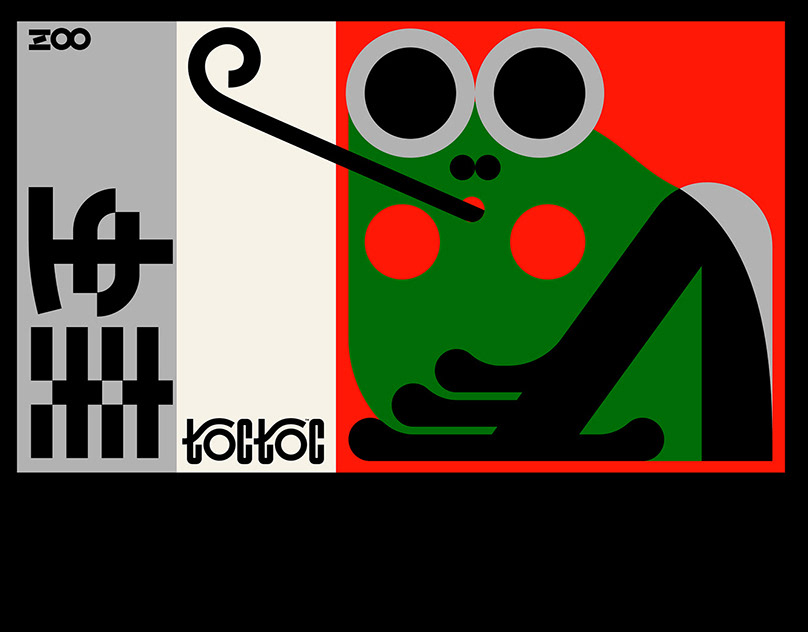FIELD TRIP
experiential learning
experiential learning
Students are now more overstimulated than ever, and the typical classroom is no longer effective. The FIELD TRIP school redefines the classroom and the school as a whole into a world of experiential learning. Instead of simply being lectured at, students are presented with opportunities for hands on, collaborative learning. The school becomes a 3D textbook, and students are on a perpetual field trip, constantly discovering new ideas and learning from their environment.

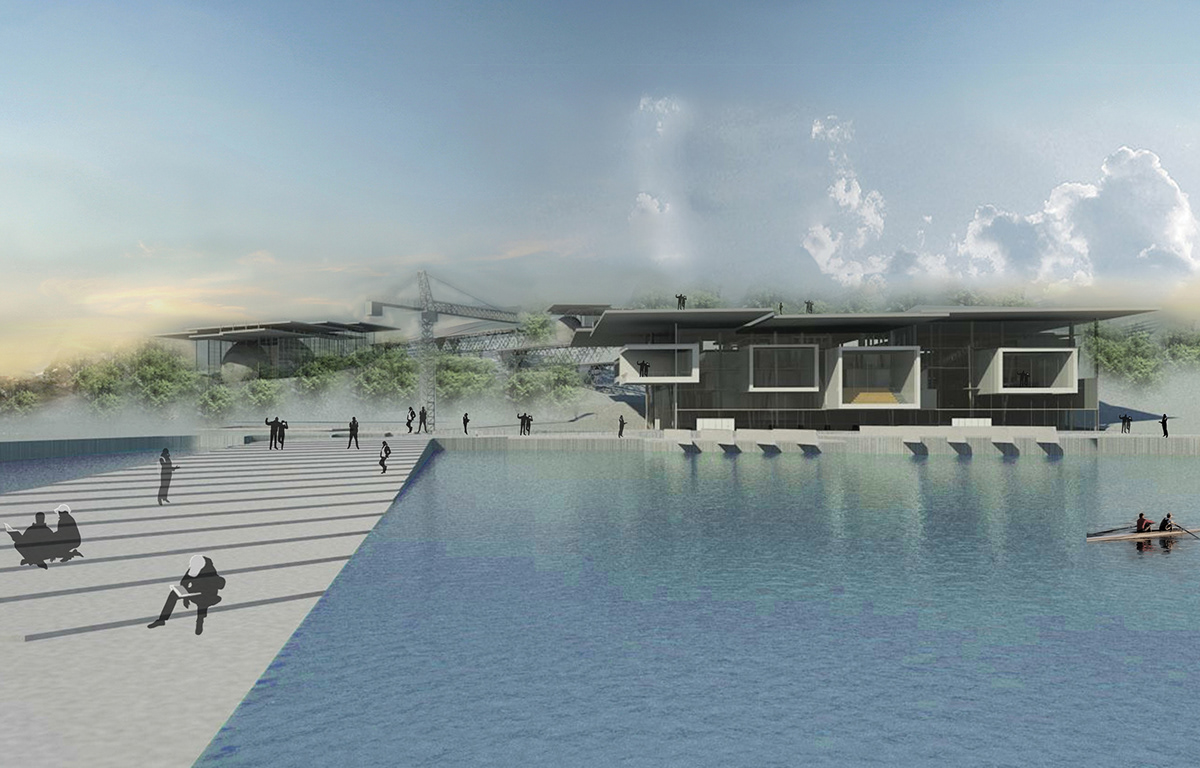

Rather than taking the traditional approach of separating subjects and having no apparent relation between them, the FIELD TRIP school is designed as a learning gradient. Between each subject pod is a bridge that helps students understand the connection between the subjects. The art and math pods are connected by an architecture bridge; the music and math pods are connected by a bridge that show how music and math are related, i.e. how vibrations are revealed in the sine curve; the gym and cafeteria are connected by nutrition and so forth.
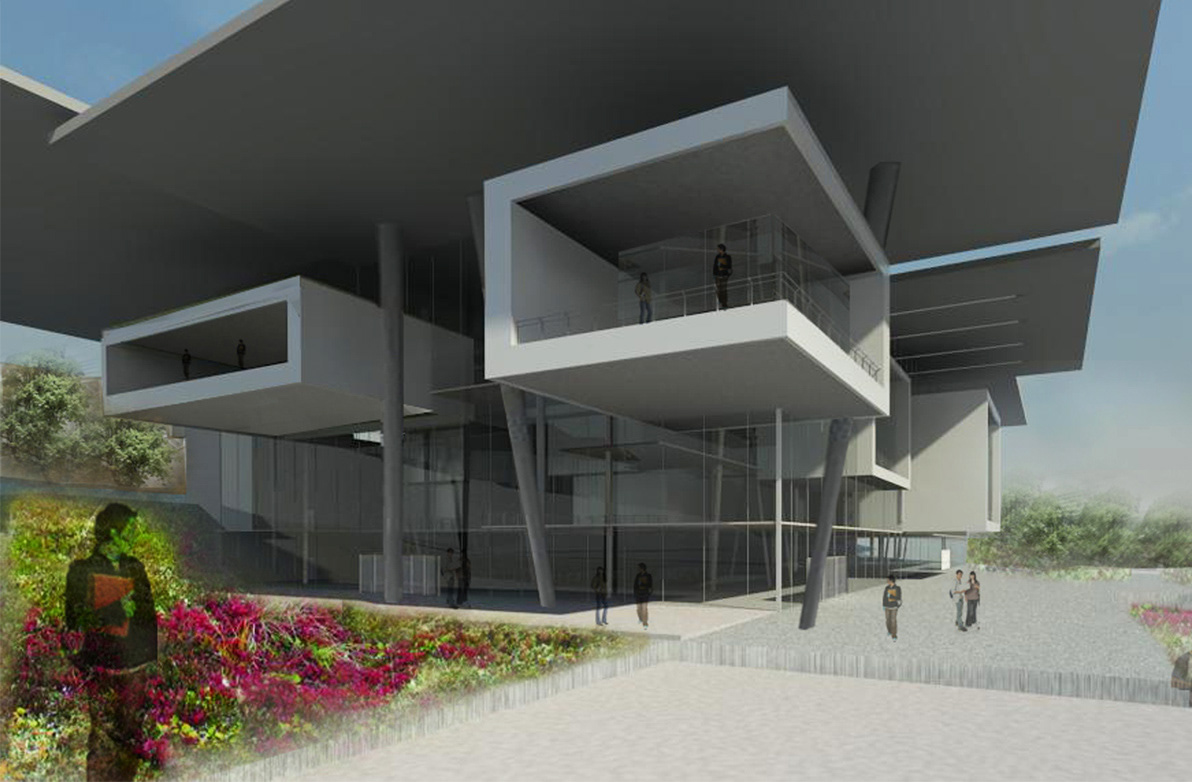
view of the main campus
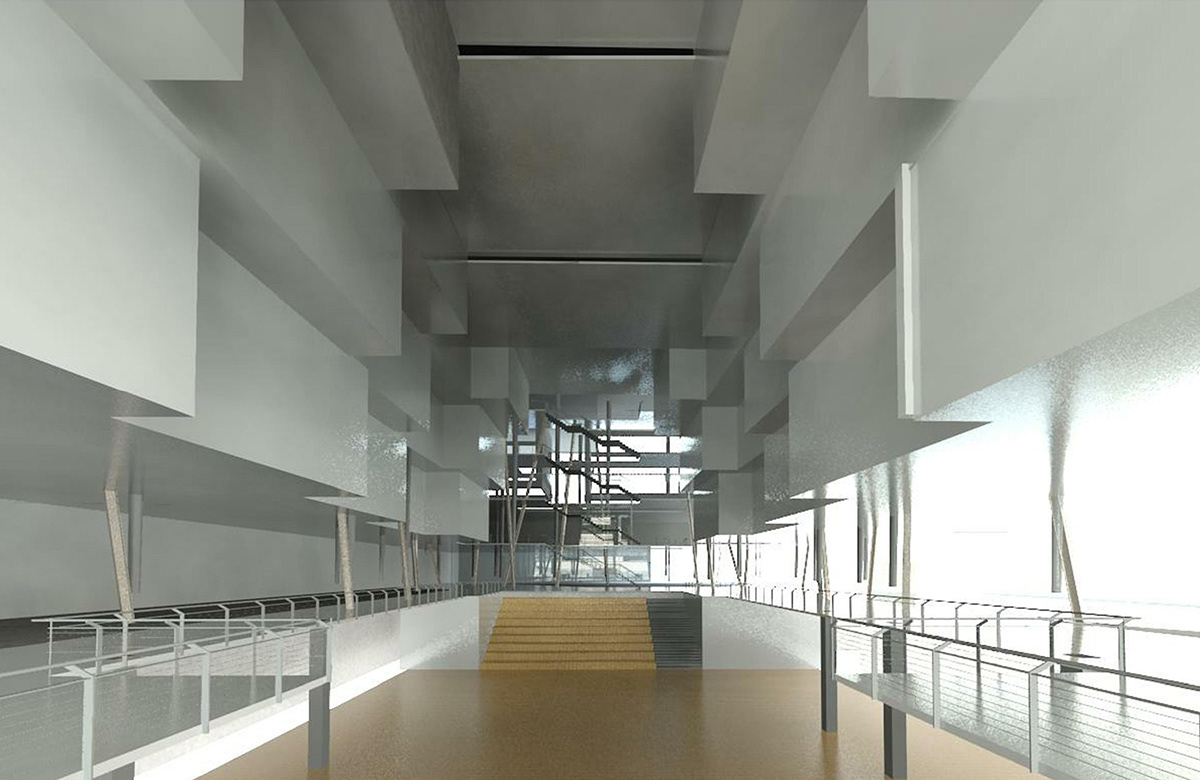
Main level central library and surrounding social space. Classroom volumes are staggered over the central library.




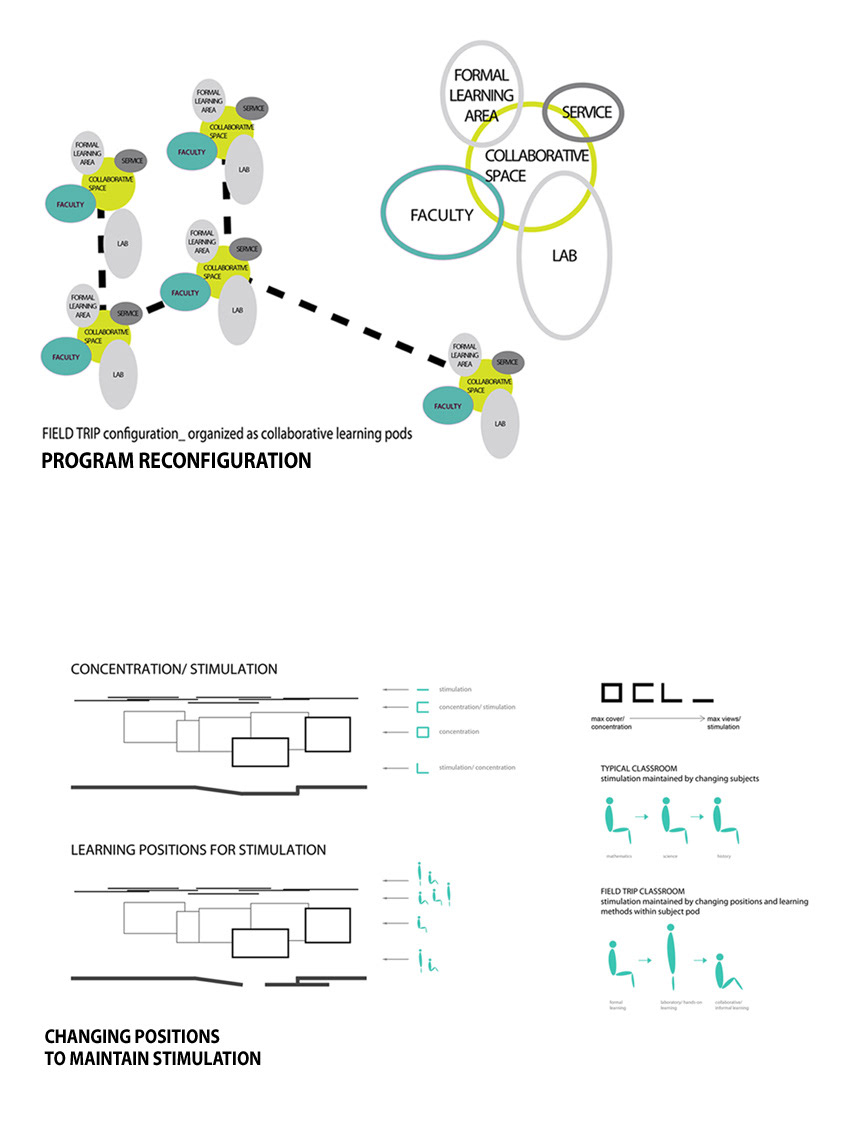
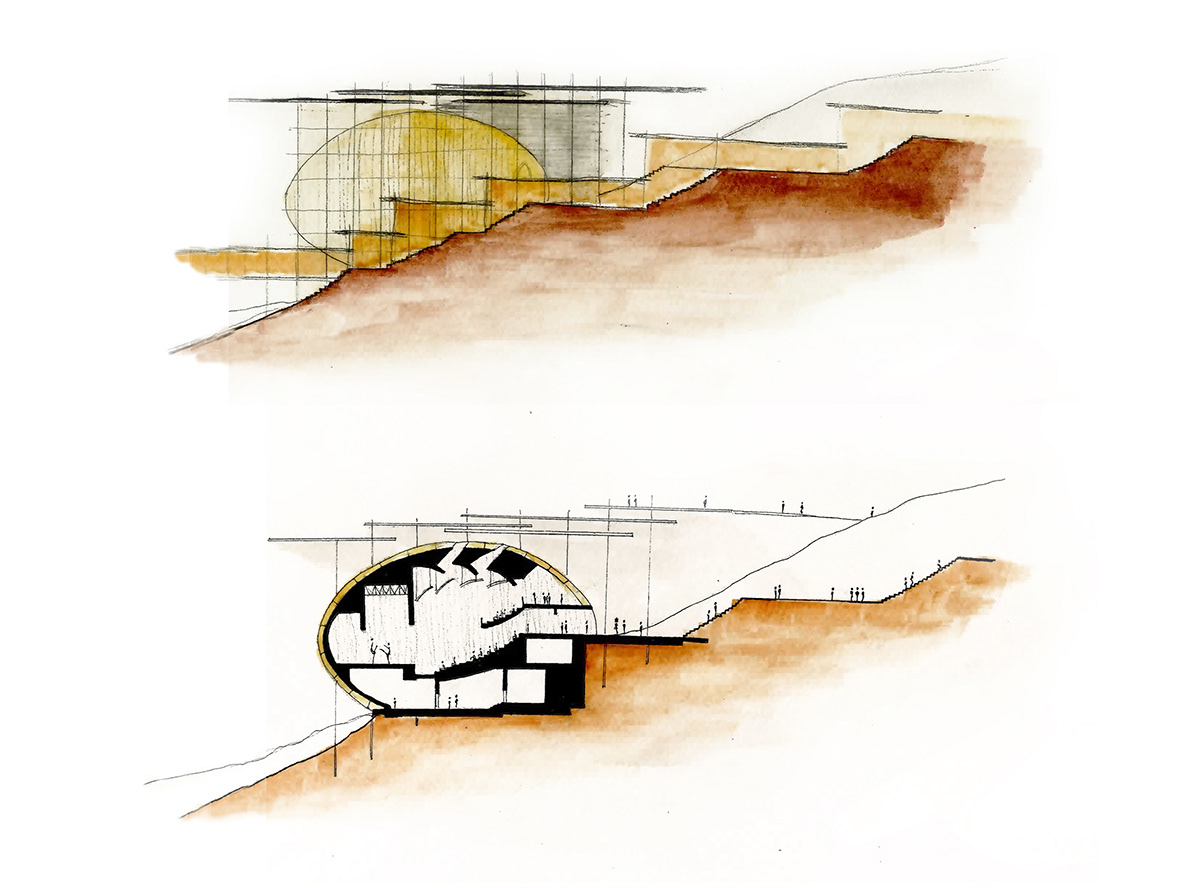

The typical organization of a school by program is shattered, and its parts are reconfigured as learning pods. This configuration encourages student/ faculty interaction and gives the students a sense of identity by their majors.
In school design, there is always a challenge of getting students to concentrate by enclosing space or getting them stimulated by creating open spaces. The FIELD TRIP school was designed with enclosed formal learning areas for maximum concentration and several more open spaces, like lab spaces and collaborative areas, to promote stimulation.
The school curriculum is typically divided into short periods because it's difficult for students to sit for longer. The problem is that switching subjects so quickly doesn't allow students to completely focus on any subject. The design of learning pods with lab spaces, formal learning areas, and collaborative areas allows students to change their positions instead of changing their subject matter. Students move from sitting formally to standing and walking, to sitting informally, allowing them to stay in one subject for several hours without losing focus.





